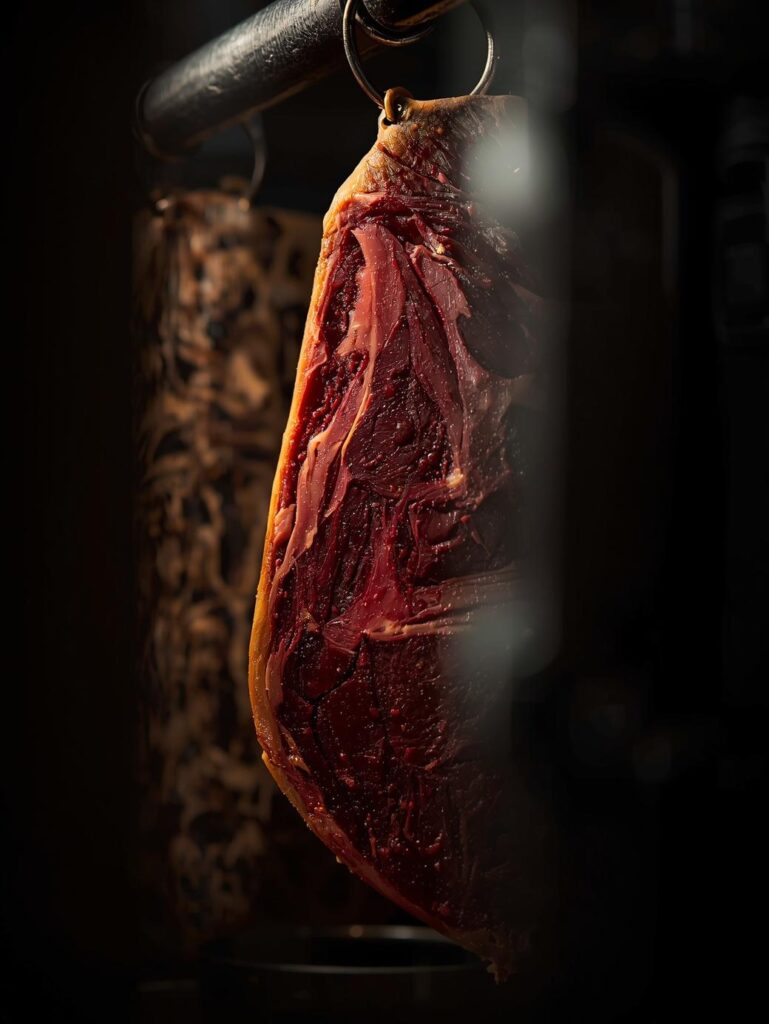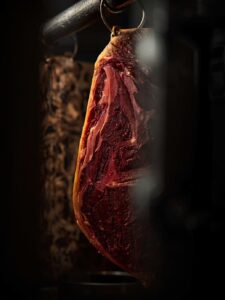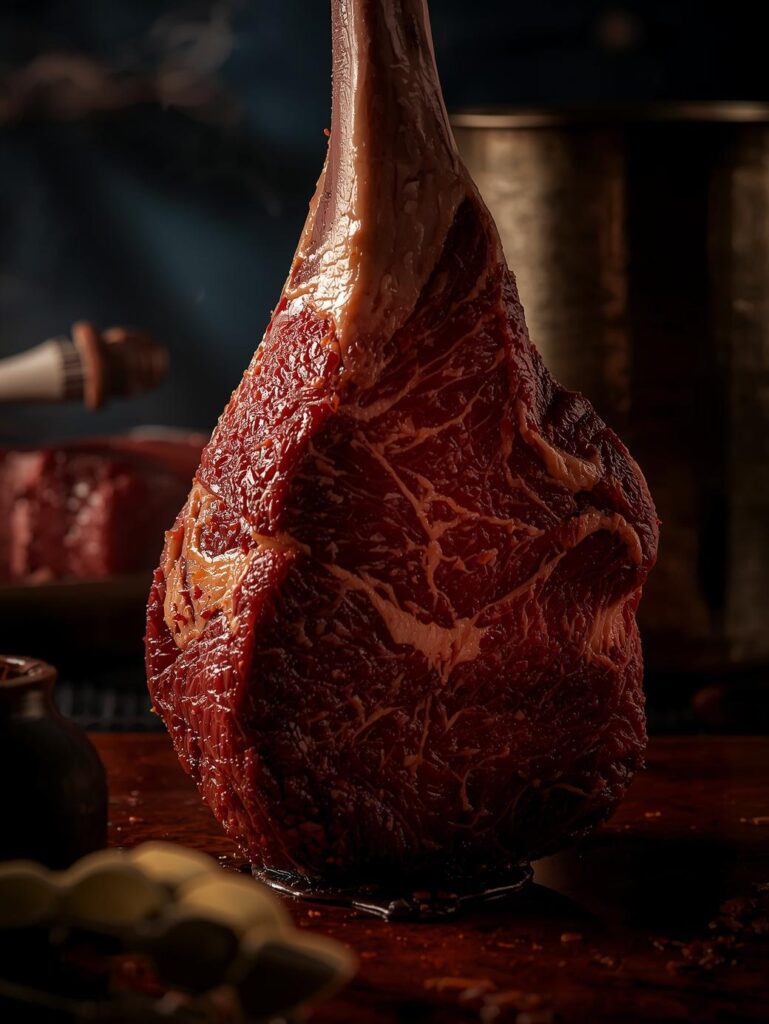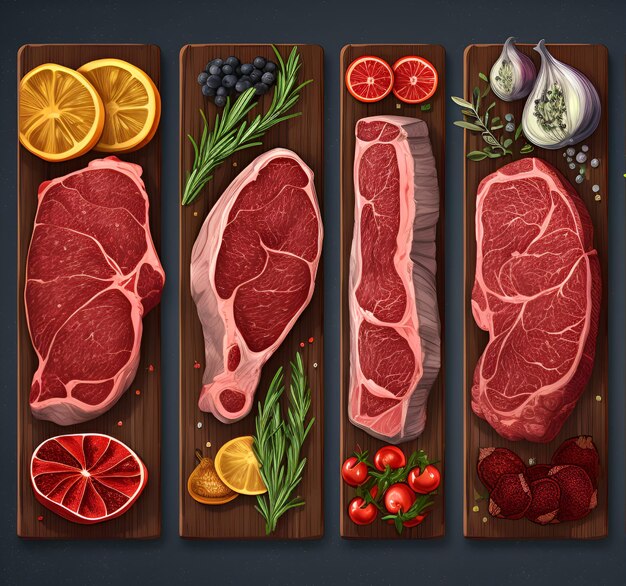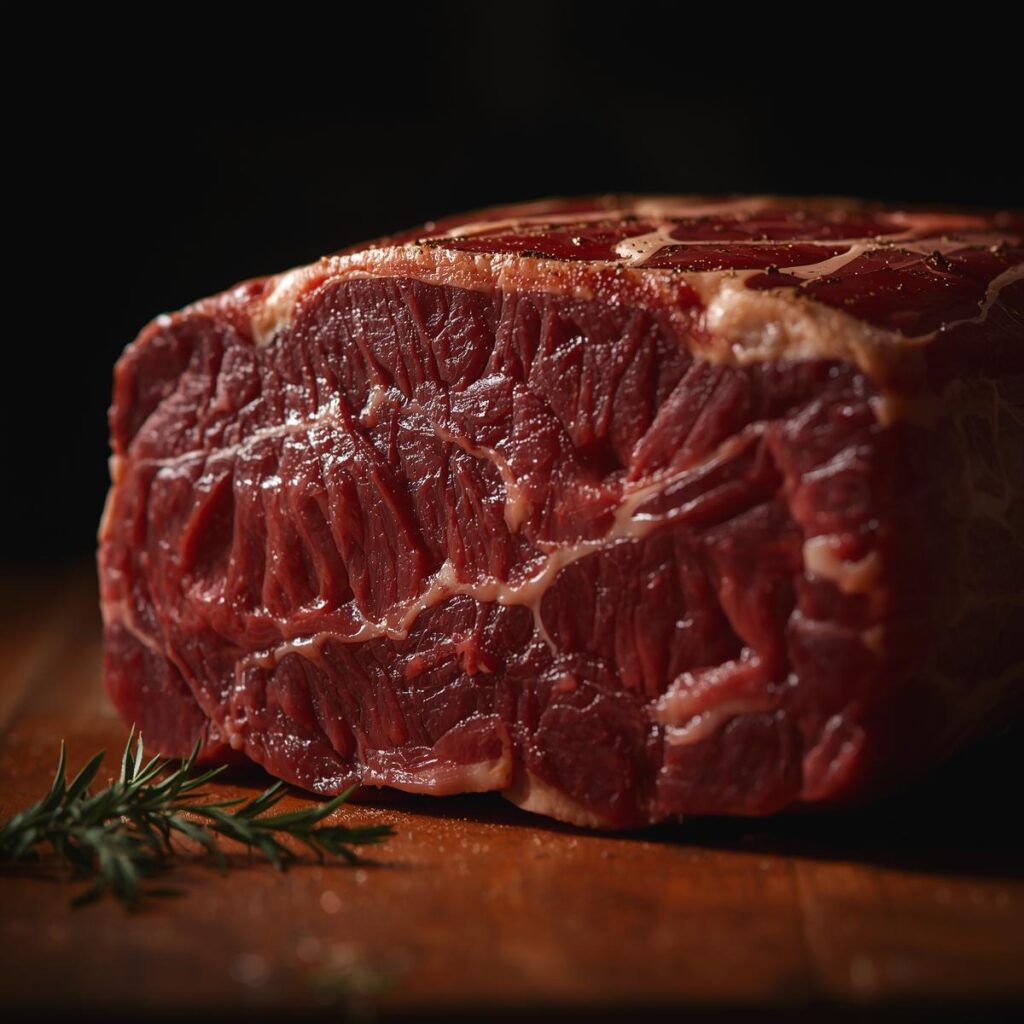Expert’s Note: This advanced dry aging guide represents the pinnacle of meat mastery, building upon our foundational dry aging at home guide. The 60-day program is not for the faint of heart—it’s a commitment to understanding the deepest complexities of enzymatic breakdown, moisture management, and flavor concentration. This is where meat science becomes meat art.
Advanced Dry Aging: The 60-Day Program for Ultimate Flavor Development
“Dry aging beyond 45 days is not preservation—it’s transformation. It’s the alchemy where time, temperature, and humidity work in concert to deconstruct and rebuild flavor. The beef doesn’t just become more tender; it becomes something else entirely. At 60 days, you’re not tasting steak anymore. You’re tasting time itself—concentrated, complex, and profoundly beautiful.”
Advanced Dry Aging: 60-Day Dry Aging Program for Ultimate Flavor & Texture
Download the 60-Day Dry Aging Progress Tracker - Weekly Checklists & Milestones
Welcome to the graduate program of meat mastery. While most home dry aging stops at 28-45 days, the 60-day journey unlocks flavors and textures that commercial operations rarely achieve. This is not simply extending time—it’s a carefully calibrated program of environmental control, microbial management, and sensory development. Here, we move beyond basic tenderization into the realm of flavor concentration, umami development, and textural transformation that will redefine your understanding of what beef can be.
🎯 THE 60-DAY PHILOSOPHY: BEYOND TENDERNESS
Understanding what happens between days 45-60 is crucial to successful extended aging.
⚙️ The Three Transformations of Extended Aging
What Changes During the Second Month
- Flavor Concentration Phase (Days 28-45): As moisture continues to evaporate, flavor compounds become intensely concentrated. The beefy notes deepen while new flavors emerge—nutty, earthy, and slightly funky notes reminiscent of aged cheese or mushrooms.
- Enzymatic Nuance Development (Days 45-60): The initial tenderization is complete by day 28. Beyond this point, more subtle enzymatic activity creates complex flavor precursors and continues to break down connective tissues at a microscopic level, enhancing the melting quality of the fat.
- Microbial Ecosystem Maturation: The beneficial mold and yeast populations establish a stable ecosystem. These microorganisms contribute to flavor development through their metabolic byproducts, creating the characteristic “aged” flavor profile.
- Structural Transformation: The meat develops a denser, almost custard-like texture while the fat becomes increasingly unctuous and spreadable at room temperature.
🎯 60-Day vs. Standard Dry Aging: The Difference
28-45 Day Standard Aging
- Focus: Tenderness development
- Flavor: Beefy, slightly nutty
- Texture: Noticeably more tender
- Yield: 75-80% of original weight
- Risk Level: Moderate
- Best For: Daily consumption
60-Day Advanced Aging
- Focus: Flavor concentration
- Flavor: Funky, cheesy, intensely umami
- Texture: Dense, almost buttery
- Yield: 65-70% of original weight
- Risk Level: High
- Best For: Special occasions
🔬 THE SCIENCE OF EXTENDED AGING: WHAT’S HAPPENING INSIDE
Mastering the 60-day program requires understanding the biochemical processes.
🧪 Enzymatic Breakdown Deep Dive
The Molecular Transformation
- Calpains and Cathepsins: These endogenous enzymes continue working throughout the 60-day period. While their tenderizing work is largely complete by day 28, they now create flavor precursors by breaking down proteins into amino acids and peptides that will later contribute to Maillard reaction complexity during cooking.
- Lipase Activity: Fat-breaking enzymes become increasingly important in extended aging. They liberate free fatty acids that can oxidize and create complex flavor compounds. This is where the blue cheese and nutty notes develop.
- Glutamate Development: The breakdown of proteins releases glutamic acid, the source of umami. At 60 days, umami levels can be 3-4 times higher than in fresh beef.
- Collagen Transformation: While collagen breakdown largely occurs in the first 28 days, the continued subtle activity enhances the melting quality of connective tissues, particularly in well-exercised cuts.
📊 The 60-Day Dry Aging Progression Timeline
🎯 Weekly Milestones and Transformations
| Time Period | Primary Transformation | Weight Loss | Flavor Development | Critical Monitoring Points |
|---|---|---|---|---|
| Days 1-21 | Surface drying, pellicle formation | 8-12% | Mild concentration, beefy | Mold establishment, even drying |
| Days 22-35 | Enzymatic tenderization peak | 15-20% | Nutty, earthy notes emerge | Temperature stability, airflow |
| Days 36-49 | Flavor concentration phase | 25-30% | Funk develops, umami intensifies | Microbial balance, moisture loss rate |
| Days 50-60 | Flavor complexity maturation | 30-35% | Blue cheese, profound depth | Final quality assessment, trimming planning |
🏗️ ADVANCED SETUP: THE 60-DAY AGING ENVIRONMENT
Standard dry aging setups won’t suffice for extended programs—precision is paramount.
🎪 Professional-Grade Environmental Control
Beyond the Modified Refrigerator
- Dedicated Dry Aging Cabinet: For serious 60-day programs, invest in a purpose-built dry aging refrigerator. These units provide precise temperature control (±0.5°F), humidity management, and UV lighting to control surface microbes.
- Dual-Zone Temperature Control: Maintain 34-36°F (1-2°C) for the first 30 days, then reduce to 32-34°F (0-1°C) for the second month. The slight temperature drop slows microbial activity while allowing enzymatic processes to continue.
- Active Humidity Management: Use a humidifier/dehumidifier system to maintain 75-80% RH for the first 45 days, then reduce to 70-75% for the final stretch. This controlled drying prevents case hardening while ensuring steady moisture loss.
- HEPA Filtration System: Install a small HEPA filter in your aging environment to control airborne contaminants and mold spores. This is crucial for preventing undesirable microbial growth during extended aging.
- Digital Data Logging: Use a WiFi-enabled temperature/humidity logger that alerts you to fluctuations. The precision tools that serve you in cooking now serve you in aging.
🔍 THE CUT SELECTION: OPTIMIZING FOR 60 DAYS
Not all cuts are created equal for extended aging—selection is everything.
✅ Ideal 60-Day Cuts
Cuts That Transform Beautifully
- Whole Ribeye Primal: The gold standard. Excellent fat distribution, thick cap, and consistent geometry. Develops incredible nutty and funky notes.
- Strip Loin Primal: Leaner but develops intense beefy concentration. The reduced fat means less waste during trimming.
- Top Sirloin Butt: An economical choice that develops remarkable flavor. The looser grain structure absorbs aged flavors well.
- Prime Grade Preferred: The abundant marbling in Prime beef protects against over-drying and contributes to flavor development during extended aging.
- Bone-In Cuts: The bone provides structural integrity and contributes to flavor development through marrow interaction.
❌ Avoid for 60 Days
Cuts That Don’t Age Well Long-Term
- Tenderloin/Filet: Too lean—becomes unpleasantly dry and develops minimal flavor complexity.
- Thin Cuts: Anything under 3-inch thickness will over-dry and become unpalatable.
- Heavily Trimmed Primals: Insufficient fat coverage leads to case hardening and excessive waste.
- Select Grade Beef: Lacks the marbling necessary to protect against moisture loss and contribute to flavor development.
- Previously Frozen Meat: Ice crystal damage compromises cellular structure and leads to poor aging results.
🦠 MICROBIAL MANAGEMENT: THE 60-DAY ECOSYSTEM
Understanding and managing the microscopic world is crucial for success.
🔬 Beneficial vs. Harmful Mold Identification
Reading the Mold Landscape
- White/Gray Fuzzy Mold (Good): Typically Penicillium or Thamnidium species. Appears fluffy and cotton-like. This is your primary beneficial mold that contributes to flavor development and protects against harmful microbes.
- Yellow/Green Mold (Monitor): Could be beneficial or problematic. If it’s bright green and powdery, it might be Aspergillus—monitor closely. If it develops alongside white mold and doesn’t spread rapidly, it’s likely fine.
- Black Mold (Danger): Immediately problematic. Usually indicates poor air circulation or contamination. The meat beneath black mold may be compromised.
- Red/Pink Mold (Danger): Indicates bacterial growth rather than mold. Usually means humidity is too high or temperature fluctuations have occurred.
- Management Protocol: For beneficial mold, let it develop naturally. For suspicious mold, wipe with vinegar-soaked cloth. For dangerous mold, trim immediately and assess if the program can continue.
📈 The 60-Day Quality Assessment Protocol
Weekly Inspection Checklist
Week 1-4: Establishment
Pellicle formation, white mold establishment, even drying, 10-15% weight loss.
Week 5-7: Development
Mold coverage 60-80%, nutty aroma development, 20-25% weight loss.
Week 8-9: Concentration
Funk aroma emergence, firm texture, 28-32% weight loss, flavor assessment.
✂️ THE FINAL TRIMMING: MAXIMIZING YIELD AT 60 DAYS
Proper trimming technique is crucial after such significant investment of time and care.
🎯 Advanced Trimming Methodology
Surgical Precision for Maximum Return
- The Two-Pass System: First, remove the hard, dried pellicle completely. Second, make a judgment call on the semi-dried outer layer—this “transition zone” often has concentrated flavor and can be used for burgers or stews.
- Yield Expectations: A 60-day program typically yields 65-70% of the original weight. A 15-pound primal should yield 9.75-10.5 pounds of usable meat.
- Fat Assessment: The external fat will be hard and waxy. However, the internal marbling should be creamy and aromatic. Preserve as much internal fat as possible.
- Aroma Evaluation: As you trim, the aroma should be intensely beefy with blue cheese and mushroom notes. Any ammonia smells indicate problematic aging—proceed with caution.
- Tool Selection: Use a long, flexible boning knife for precision work. A stiff butcher’s knife is essential for removing the hard pellicle efficiently.
🍽️ COOKING 60-DAY AGED BEEF: TECHNIQUE ADJUSTMENTS
The cooking rules change when dealing with profoundly transformed meat.
🔥 Adapted Cooking Methods for Concentrated Flavor
Honoring the Transformation
- Simplified Seasoning: The meat is so flavorful it needs little enhancement. Coarse salt only—no pepper, no garlic, no herbs. The complexity should come from the aging, not the seasoning.
- Lower Cooking Temperature: Use medium heat rather than high heat. The concentrated proteins and sugars burn more easily. The goal is warming and gentle crust development, not aggressive searing.
- Shorter Cook Time: The meat is more dense and requires less time to reach desired doneness. A 1.5-inch steak might need 30% less time than its fresh counterpart.
- Resting is Crucial: The dense structure requires longer resting—at least 10 minutes for steaks, 20+ minutes for roasts. This allows the concentrated juices to redistribute properly.
- Serving Temperature: Serve slightly warmer than fresh steak. The fat should be soft and spreadable at serving temperature to maximize the unctuous mouthfeel.
🚨 60-DAY AGING TROUBLESHOOTING & RESCUE PROTOCOLS
🎯 Advanced Problem-Solving for Extended Aging
| Problem | Symptoms | Cause | Rescue Protocol |
|---|---|---|---|
| Case Hardening | Hard exterior, soft interior; ammonia smell | Humidity too low; airflow too high | Increase humidity to 85% for 48 hours; reduce airflow; may need to trim early |
| Excessive Moisture Loss | >40% weight loss; overly dense texture | Extended time; low humidity; high airflow | Trim immediately; use for grinding; blend with fresh beef for burgers |
| Ammonia Odor | Sharp, chemical smell | Protein breakdown too advanced; bacterial issues | Trim exterior heavily; assess interior aroma; may be salvageable for well-done applications |
| Uneven Drying | One side much drier; mold growth uneven | Poor air circulation; temperature gradients | Rotate meat; add small fan; reposition in aging environment |
| Rancid Fat | Yellow, sticky fat; unpleasant odor | Oxidation; temperature fluctuations; poor quality beef | Trim all affected fat; use quickly; not salvageable for premium applications |
🏁 THE ULTIMATE AGING ACHIEVEMENT
Completing a 60-day dry aging program represents the pinnacle of home meat mastery. You’ve not just preserved meat—you’ve transformed it. You’ve guided a piece of beef through a two-month journey of enzymatic, microbial, and physical change, emerging with something that cannot be bought in any store.
The first slice into your 60-day masterpiece will reveal a color so deep it’s almost purple, a aroma so complex it defies description, and a flavor so profound it will change your standard for what beef can be. This is not just dinner—it’s a testament to patience, knowledge, and respect for the craft.
Your journey into extended aging begins with a single primal cut and the courage to wait. The rewards are not just in the eating, but in the knowledge that you’ve achieved what few home cooks ever attempt, let alone master.
The clock is ticking. The environment is controlled. The transformation awaits.
⏳ START WITH 30-DAY AGING FIRST →
Master the fundamentals before attempting extended aging programs
Continue Your Meat Science Journey: Dive deeper into advanced techniques and understanding.

